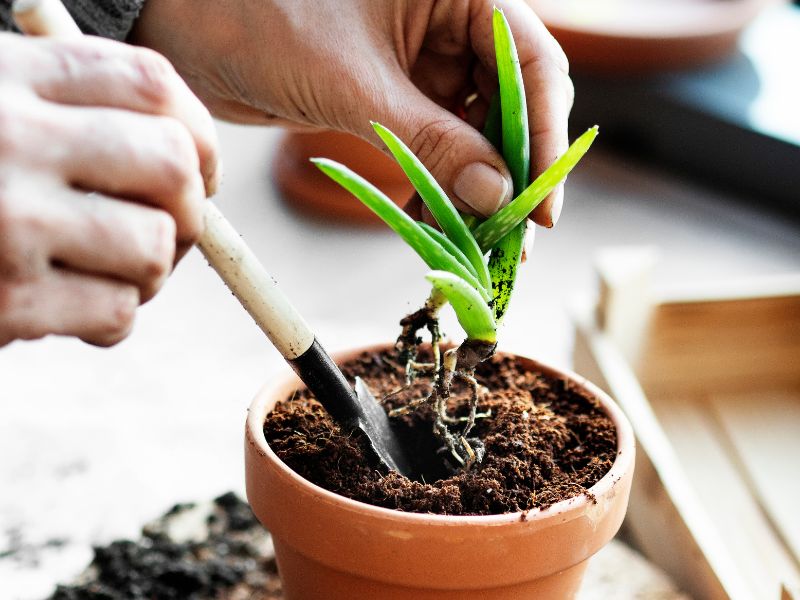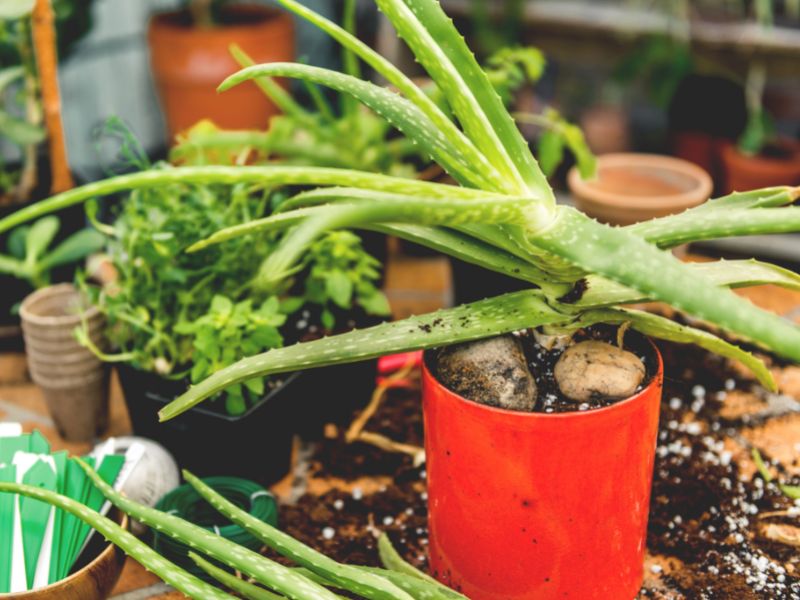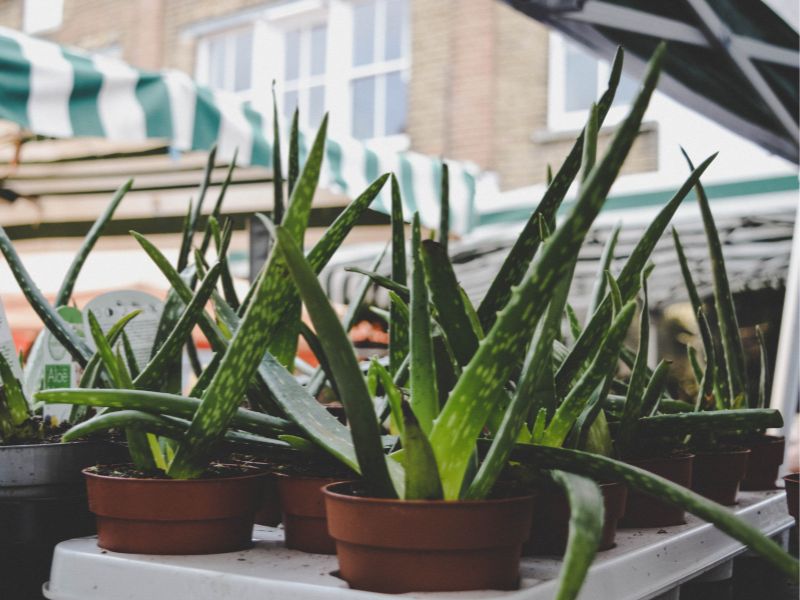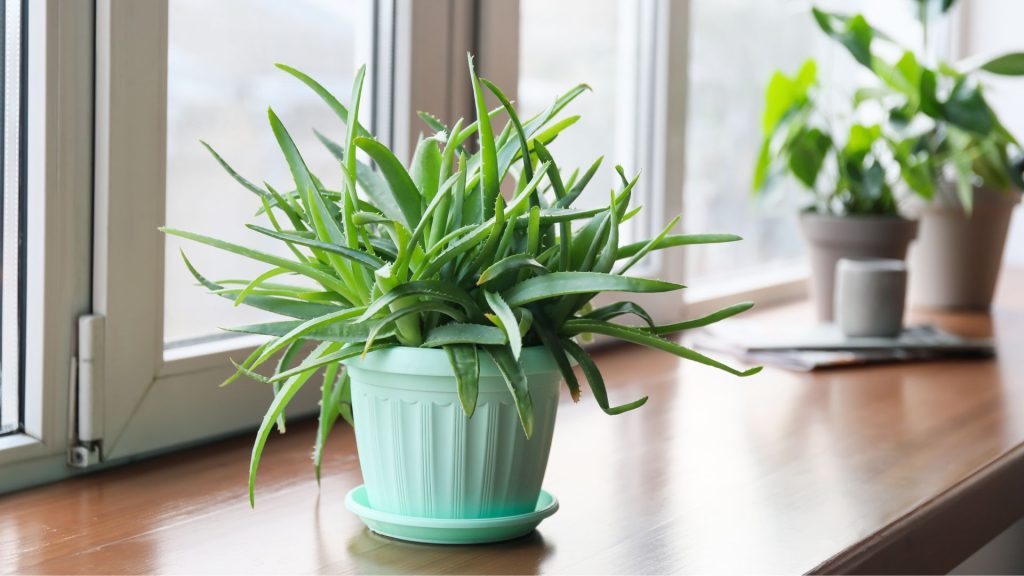Aloe vera is a popular plant known for its medicinal properties and is widely used in skincare, beauty products, and health supplements. In this article, we will cover essential care tips to help you grow and maintain a healthy Aloe vera plant. Proper plant care is crucial to reap the benefits of this amazing plant.
Planting Aloe Vera

- The first thing you want to do is choose a container suited for this type of plant. Try a pot that has a porous material like terra-cotta, for example, the soil when in this type of container will be able to dry between waterings, and it is also quite stable because of its weight. You can use a plastic pot but these tend to keep moist inside more.
- Make sure that you choose a container with at least one draining hole at the bottom. This is important because the water that is not absorbed needs to have a way out of the pot. Aloe vera are hardy plants, but when there is excessive water the roots might rot causing the death of the plant.
- Pick a container with the same width as its depth. If there is a stem in your aloe vera choose a pot that is deep enough for the whole stem to be under the soil.
- Aloe vera are plants of the succulent family. So the soil that you use should be of the kind that is appropriate for succulents and cacti, which means soil that has good drainage. Don’t use soil that is used for gardens. A mix that contains lava rock, perlite, chunks of bark, will be good for this use.
How to Grow Aloe vera?

It is possible that your plant will grow and need more space, this is when you’ll want to re-pot it. Here is the way for you to do it:
- Preparing the new pot for planting. Wash it first, let it dry completely, and then place ver the drainage hole a little piece of screen, this will prevent the soil from getting inside the while and blocking the passage of water.
- Take the aloe vera from its pot, and gently clean the roots to remove dirt excess. If there are pups remove them at this point. You may cut the stem of your plant a bit if it’s too long to fit inside the new pot, but try to leave as much stem as you can. Place the plant like this, bare, in an area that is warm with indirect light. After a few days, where there was the wound of the cut a callous will appear this is the time to continue with the repotting.
- Fill a third of the pot with the soil mix and put your plant inside. After that, you can continue to fill the pot with soil around the plant. Don’t fill it all the way up, leave some space at the top. Don’t water your plant right after you plant it.
- Let your plant be for a little while. After repotting it you should leave it alone without water for a week at least. This way the plant will have time to develop new roots without the risk of rotting. Keep it in a warm place with indirect light until it has established itself.
Aloe vera Care Instructions
Watering
Watering is a critical aspect of plant care. Over-watering or under-watering can damage the plant. The frequency of watering depends on several factors, such as temperature, humidity, and soil type. Aloe vera plants should be watered deeply but only when the soil is dry to the touch. It is also essential to ensure that the pot has adequate drainage holes to prevent waterlogging.
Soil
The right soil type is crucial for the healthy growth of the Aloe vera plant. The ideal soil type should be well-draining, light, and sandy. Aloe vera plants prefer slightly acidic soil, with a pH range of 6.0 to 7.0. It is also essential to ensure that the soil is rich in nutrients, such as potassium, phosphorus, and nitrogen, which can be achieved through regular fertilization.
Light
Aloe vera plants require bright, indirect sunlight for optimal growth. However, excessive exposure to direct sunlight can damage the plant. It is essential to place the plant in an area where it can receive sunlight for at least six hours a day. If the plant is not getting enough light, it will show signs such as elongated stems or yellowing leaves.
Temperature and Humidity
Aloe vera plants thrive in warm and humid conditions. The ideal temperature range for the plant is between 60°F to 75°F (15°C to 24°C). However, the plant can tolerate temperature fluctuations, provided it is not exposed to extreme cold or heat. Aloe vera plants prefer a humid environment, but too much moisture can lead to root rot. A humidity level of around 40% is ideal for the plant’s healthy growth.
Fertilizing
Fertilizing is an essential aspect of Aloe vera plant care. The plant requires regular fertilization to maintain its health and vitality. The type of fertilizer and frequency of application will depend on the soil type and the plant’s growth stage. Generally, a balanced, water-soluble fertilizer with a 10-40-10 or 10-10-10 nutrient ratio is suitable for Aloe vera plants.
Repotting
Aloe vera plants require repotting when they outgrow their containers or when the soil becomes depleted of nutrients. The plant should be repotted every two to three years, preferably during the spring or summer season. It is essential to select a pot that is slightly larger than the previous one and has adequate drainage holes. During repotting, it is essential to be careful not to damage the plant’s roots.
Common Issues and Solutions
Aloe vera plants can suffer from various pests and diseases, including mealybugs, spider mites, and root rot. Signs of an unhealthy plant include wilting, discoloration, and stunted growth. Pests can be removed using insecticidal soap or neem oil, while fungal infections can be treated with a fungicide. It is also essential to ensure that the plant is not overwatered, as this can cause root rot.
How to Replant Aloe vera?

When your aloe vera becomes mature, it is very likely that it will start producing offsets, new plant babies, called also pups or plantlets. If you wish you can take these new baby plants and start growing a whole new plant.
What you can do is:
- Discover the point of attachment of the offsets to the mother plant and separate them carefully using scissors, a sharp knife, or pruning shears. At least 2,5 cm of the stem should be left on the offset.
- Leave the offset sitting outside of soil for a few days, allowing them time to develop a callous where the cut happened, this will prevent it from rotting. The offsets should be kept in a place where it is warm and there is indirect light.
- When the callouses on the plant babies have formed, you can pot them in the same type of soil, with good drainage.
- These pups that have been newly potted should be set in a location that gets sun. Leave it be for at least a week until you water it, allowing the soil to become dry.
Conclusion
Proper plant care is crucial for the healthy growth of Aloe vera plants. By following the tips outlined in this article, you can ensure that your plant thrives and reaps its medicinal and cosmetic benefits. Remember to water your plant deeply and only when the soil is dry, use well-draining soil, provide adequate light and humidity, fertilize regularly, and repot as needed. By addressing common issues such as pests and diseases, you can prevent or treat any problems before they become severe.
Aloe vera plants are relatively easy to care for, but it is essential to be patient and consistent in your efforts. With proper care, your Aloe vera plant can live for many years and provide you with its many benefits. Remember to also enjoy the aesthetic beauty of this plant and the sense of satisfaction that comes with caring for it.
In conclusion, Aloe vera plant care is critical to maintaining a healthy and thriving plant. By following the guidelines outlined in this article, you can provide your Aloe vera plant with the right amount of water, soil, light, temperature, and nutrients. It is also important to be aware of common issues and how to address them promptly. With proper care, you can enjoy the beauty and benefits of your Aloe vera plant for years to come.


